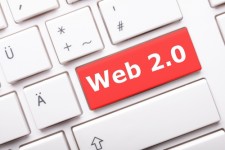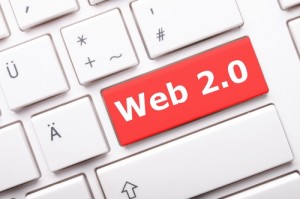
As educational technology transforms teaching and learning, many districts are finding that once-solid acceptable use policies (AUPs) must be updated to reflect students’ and teachers’ increasing use of Web 2.0 technologies and other digital media tools.
To that end, the Consortium for School Networking (CoSN) has released an AUP guide to help school district leaders rethink their internet use policies and how educational technology can best be used to help students get the most out of their time in school.
The new guide addresses the following questions:
- How does policy differ from procedure, and does the difference matter?
- What are the two major approaches used to develop a district’s AUP?
- Is the district’s AUP a part of or the totality of the district’s technology policy?
- What are the key federal laws affecting internet access, safety, and social networking in schools?
- How do state laws or district policies affect school districts’ internet policies pertaining to filtering, AUPs, cyber bullying, and cell phone use?
- Does the increasing prevalence of Web 2.0 and student-owned mobile devices necessitate updating a district’s educational technology policies?
- Where can I find samples of various exemplary AUPs?
- What are some timely, relevant, and useful resources pertaining to the use of Web 2.0 technologies in schools?
James Bosco, principal investigator for CoSN’s Participatory Learning in Schools: Leadership and Policy Initiative, warned that administrators must acknowledge the growing role technology is taking in schools.
“I think we’re fighting a losing battle if the effort is to control it by limiting access and attempting to more or less close the door,” said Bosco. “We have to think about this more in terms of how we work with our students, so it’s not just a matter of forbidding them, but [that] they understand how to use it both for good learning purposes and in an ethical manner.”
The policy questions address the prevalence of Web 2.0 applications and mobile internet devices in schools, and how they affect schools’ safety and access. The guide’s purpose is to help districts in “developing, rethinking, or revising internet policies.”
“I think the new guide that we put out on acceptable use policies, or, as we’re informally calling it, ‘Moving from Acceptable Use Policies to Responsible Use Policies,’ … the point of the conversation today is that school leaders need to start rethinking their basic assumptions,” said CoSN CEO Keith Krueger.
Bosco said that schools have a responsibility to teach their students responsible Web 2.0 tool use.
“You’re a lot better off if you use this technology ethically and responsibly, rather than using it to create harm or mischief or in bad ways,” Bosco said. “Schools need to think of it more as working with kids rather than developing a set of rules and regulations and assuming, because they have the rules and regulations, all is well with the world.”
Krueger agreed, and he noted that many schools are currently using a “walled garden” approach, where they only allow access to certain sites by a specified group of students. However, he said districts that give students a modicum of freedom don’t necessarily have disciplinary issues.
“It’s part of owning your own education,” said Krueger. “Those districts that have provided open access to publicly available tools have actually not experienced major disciplinary problems.”
Bosco said many schools have different policies on the use of mobile devices, such as cell phones with internet capabilities. These range from no phones being allowed on the premises to web-capable phones becoming an active part of classroom activity.
“It’s like the pencil that you bring from home: When you need to use it, you can use it, but you can’t use it to poke the kid sitting next to you,” Bosco said.
The AUP guide also addresses cyber bullying, an issue at the forefront of many educators’ minds. However, both Krueger and Bosco pointed out that the “cyber” aspect is not necessarily the biggest concern for schools.
“I think the district is missing the point, because what the district should be concerned about is how people treat people within the school community. In that context, what you’re trying to do is to create a civil society within the domain of the school district,” said Bosco.
“When we try to solve the problem simply by limiting or prohibiting the access to the technology, it just pulls us farther away from where we think you need to go,” Krueger said.
Bosco said he rejects the idea that the internet makes boundaries blurry.
“The line between what’s acceptable and what’s not acceptable is really not that hazy.”
- New film fights negative perception of teachers - September 16, 2011
- Textbook-free schools share experiences, insights - September 7, 2011
- Social websites are latest sources for plagiarized material - September 1, 2011



Comments are closed.